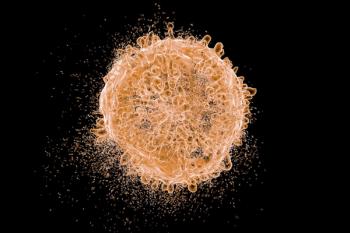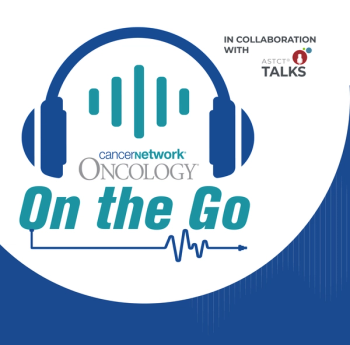
Nadofaragene Firadenovec Yields Responses in BCG-Unresponsive NMIBC
Data from a Japanese trial add to the body of evidence supporting the favorable efficacy and safety of nadofaragene firadenovec for this NMIBC population.
Treatment with nadofaragene firadenovec-vncg (Adstiladrin) elicited a strong complete responses (CR) rate in a small cohort of patients with high-risk Bacillus Calmette-Guérin (BCG)–unresponsive non-muscle invasive bladder cancer (NMIBC) with carcinoma in situ (CIS) with or without papillary tumors, according to a press release on findings from a Japanese phase 3 trial.1
Findings presented at the 112th Annual Meeting of the Japanese Urological Association demonstrated a CR rate of 75% (n = 15/20) at 3 months.
Drug-related adverse effects (AEs) affected 80% of patients, with a total of 76 AEs observed. These AEs consisted of grade 1 (84.2%) or grade 2 events (15.8%), with no grade 3 to 5 toxicities reported.
According to the press release, these results build upon a growing body of evidence supporting the efficacy and safety of nadofaragene firadenovec in this NMIBC population. For example, findings from a real-world study presented at the
“When BCG therapy is ineffective, patients are forced to choose invasive surgery [such as] total bladder removal, but nadofaragene firadenovec may provide a new treatment option. These findings are particularly significant for Japanese patients, as our treatment options have been more limited compared to other regions,” Keiji Inoue, MD, PhD, a professor in the Department of Urology at Kochi Medical School, stated in the press release.1 “The ability to achieve such promising results represents an important advancement for our clinical practice.”
Investigators of the ongoing Japanese phase 3 trial are assessing the safety and efficacy of nadofaragene firadenovec in 2 cohorts of patients with high-risk BCG-unresponsive NMIBC. One cohort includes those with CIS with or without papillary tumors, and the other includes those with papillary tumors alone. Investigators created a conservative protocol for the Japanese trial that was intended to replicate the CS-003 study, although patients who did not achieve a response at 3 months did not have the opportunity to receive a re-induction dose.
The
At the time of the approval, data showed a CR rate of 51% (95% CI, 41%-61%) and a median duration of response (DOR) of 9.7 months (range, 3 to 52+). Additionally, 46% of those with a CR remained in response for 1 year or longer.
The phase 3 trial’s primary end point was the number of a patients with a CR in the CIS cohort.5 Secondary end points included duration of CR, event-free survival, duration of high-grade recurrence-free survival, incidence of cystectomy at different periods, overall survival, and safety.
Patients 18 years and older with BCG-unresponsive NMIBC and a life expectancy of more than 2 years were eligible for enrollment on the CS-003 study. Other enrollment criteria included having an ECOG performance status of 0 to 2 and adequate laboratory values.
“These new phase 3 findings affirm the safety profile of nadofaragene firadenovec, demonstrating a 3-month efficacy that is higher than previously reported in our phase 3 clinical trial, and complements results from an ongoing independent real-world study presented earlier this year. Collectively, the data are broadening our understanding of the value that nadofaragene firadenovec offers, furthering our journey to establish nadofaragene firadenovec as the new standard of care and backbone therapy across the urothelial cancer disease spectrum,” Joern Jakobsen, MD, PhD, vice president and head of Global Research and Medical for Uro-Oncology and Urology at Ferring Pharmaceuticals, concluded.1
References
- Ferring announces initial data from phase 3 trial in Japanese patients demonstrating 75% complete response rate at 3 months with (nadofaragene firadenovec) in BCG-unresponsive NMIBC patients. News release. Ferring Pharmaceuticals. April 21, 2025. Accessed April 21, 2025. https://tinyurl.com/mpb9hfnd
- Moyer J, Durant A, Nguyen M, et al. Real-world outcomes of nadofaragene firadenovec in BCG-unresponsive non-muscle invasive bladder cancer. J Clin Oncol. 2025;43(suppl 5):716. doi:10.1200/JCO.2025.43.5_suppl.716
- Boorjian SA, Alemozaffaar M, Konety BR, et al. Intravesical nadofaragene firadenovec gene therapy for BCG-unresponsive non-muscle-invasive bladder cancer: a single-arm, open-label, repeat-dose clinical trial. Lancet Oncol. 2021;22(1):107-117. doi:10.1016/S1470-2045(20)30540-4
- FDA approves first gene therapy for the treatment of high-risk, non-muscle-invasive bladder cancer. News release. FDA. December 16, 2022. Accessed April 21, 2025. https://tinyurl.com/4uepmmmz
- ADSTILADRIN (=INSTILADRIN) in patients with high-grade, Bacillus Calmette-Guerin (BCG) unresponsive non-muscle invasive bladder cancer (NMIBC). ClinicalTrials.gov. Updated July 29, 2024. Accessed April 21, 2025. https://tinyurl.com/3p75byj3
Newsletter
Stay up to date on recent advances in the multidisciplinary approach to cancer.





